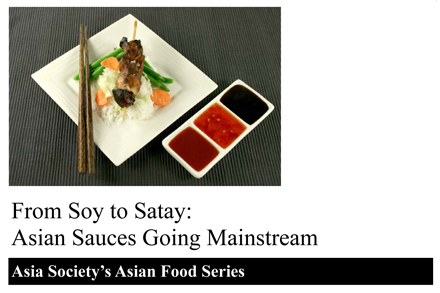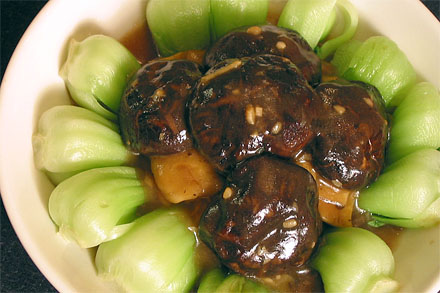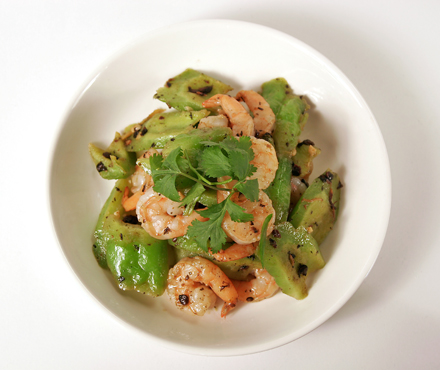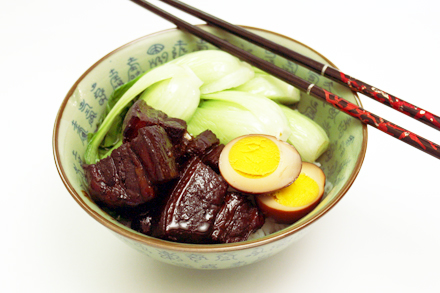
This question came up during an Asian food panel discussion I attended at the Asia Society in New York on Monday. The discussion was titled “From Soy to Satay: Asian Sauces Going Mainstream.” A panelist put forward the idea that there is a difference in the definition of a sauce in Asian versus Western, or more specifically French cooking traditions. It was a revelation to me. I have never considered the idea that there might be any ambiguity in the definition of a sauce.
In classic French cooking a sauce is a separately prepared concoction of liquid and aromatic ingredients used to dress the final dish, such as Hollandaise sauce on asparagus. A liquid that is cooked with the dish is often called gravy, however it is also sometime referred to as sauce in English. Optional addition you put on a finished dish to enhance its main flavor is commonly known as condiment. The question is whether these distinctions are important in the culinary language of different culture?
 Early in the discussion Raghavan Iyer (Author of 660 Curries: The Gateway to Indian Cooking
Early in the discussion Raghavan Iyer (Author of 660 Curries: The Gateway to Indian Cooking) explained how these three terms are not used in Indian cooking. He pointed out that sauces are in fact the products of braising and stewing. Curry sauces are not made from curry powder or a separate process; rather they are the result when ingredients and spices are added to the stew creating “gravy.” Iyer said that the term “curry” simply means “gravy” from a stew in India. In fact he contended that “curry powder” was the invention of the British Raj as a convenience to reproduce native food without needing to have a detail knowledge of the spices.
In Chinese cooking there is no distinction in the language used for sauce or gravy as we defined above. All sauces are referred to as zhi (汁). Condiment is also widely used in Chinese culinary tradition but there is not a single term for this category. English language translations don’t give any hints about the cooking process. Soy sauce for example is used in “sauce” and gravy, or as codiment. Perhaps this is the reason why I’ve never really paid attention in the differences.
At the end of the discussion I was more confused then ever. Why don’t you tell me if it really is important to make all these divisions?
-
-
Panelists
- Susanna Foo (Executive Chef of Sunanna Foo’s in Philadelphia)
- Raghavan Iyer (Author of 660 Curries: The Gateway to Indian Cooking)
- John Nihoff (Professor at The Culinary Institute of America)
- Whiting Wu (President of Summit Import Corporation)
-
moderator
- James Oseland (Editor in Chief at Saveur Magazine)
-






The distinction is wanted by those trying to apply French style cooking classifications to Asian foods. Many classically trained chef are very comfortable with the French way. So what if Asian food does not neatly fit into their schematic?
Very interesting! For me, it’s more important to be able to cook well than to know the proper terminology. Still, your discussion is interesting especially in what it reveals about each culture and it’s culinary arts.
I’ve also realized recently that French style sauces are very different than Chinese style sauces. Growing up eating Chinese food, I had never realized before that other people cook the sauce separately!
I think it’s arrogant of westerners to attempt to apply their definitions to the cooking of Asian cultures, especially as in many ways Asian sauces predated Modern European cookery.